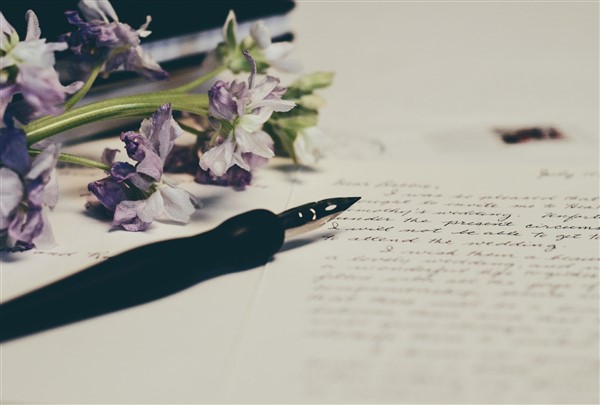Where Does A Ps Go
The Definition of PS and Examples of PS
P.S. is an abbreviation of the term postscript, which comes from the Latin post scriptum, sometimes written as postscriptum. This Latin word/phrase translates to "written after," and that gives us a clue to the meaning—and usage—of P.S. This abbreviation indicates an afterthought: a notion secondary to your original thought, or an idea that came later, that was maybe almost forgotten but then, poof, popped into your head.
Before the days of email (and phones for that matter), people corresponded through written letters that were either sent through the mail or hand-delivered. Typically, these letters were formal in nature, beginning with a greeting or salutation—such as "Dear," "To Whom It May Concern," "Hello," or "Greetings"—and ending with a closing or sign off, sometimes called a complimentary close or valediction, like "Sincerely," "Best Wishes," "Love," and "Warm Regards." The closing would then be followed with a signature. With these handwritten or typewriter-typed letters, people didn't (and, of course, still don't!) have the capacity to go back and edit what was written or easily add more information. So, the postscript was born to make it possible for a letter writer to share something at the end of a letter that they left out originally, after they had already signed their closing. And it's still used in the same way today.

Put simply, postscript refers to what comes after the writing. A P.S. can be a short sentence or short (or less often, long) paragraph that comes after the main body copy of the letter and after the closing and signature. Again, it is usually used to share an afterthought, something forgotten in the letter or an additional idea, perhaps slightly less important than what has already been conveyed, but that the writer nevertheless wants to share.
Think of it this way: A P.S. provides you the chance to say one more thing. Oftentimes a postscript message can be used to make a quick funny or clever comment, or to serve as emphasis at the end of the letter. It can even be used in an argumentative way, to drive home a point and get the last word in. Author Shaun Usher describes the postscript like this: "The P.S. is the most charming part of a letter. It's the wink you give as you walk away." Keep reading for much more about how P.S. is used today.
Here are two example letters using P.S.:
Dear Sara,
How are you doing? Are you well? How about your kids and your parents? Things are going great here. I'm loving my job, and my husband and the little ones are healthy and happy. My mom and dad recently went to Paris! I hope to see you and the family soon! Warm regards, P.S. Can you believe it has already been a year since our last visit?! Don't be such a stranger!
Katie
________
Greetings, Sam!
We're busy here getting ready for your visit! We're getting the guest room in order, and we're making a long list of fun things for us all to do together. We've got lots of places we want to take you, like museums and restaurants, of course. We've missed you so much, and we can't wait to see you at the airport in just a few weeks!
Love,
Your sister, brother-in-law, and niece and nephew
P.S. It may rain, so don't forget to pack a raincoat!
P.P.S. Your nephew wants you to pack that funny hat he loves!
Sometimes, a letter writer might find themselves needing to make another additional point, as in the example above, or even two additional points. The terms and abbreviations for a second and third postscript are: postquam post scriptum or post post scriptum/post postscript and P.P.S., and thus post post postscriptum and P.P.P.S. Theoretically, this could go on forever, adding posts and Ps as needed; however, you'll typically only see P.S. and P.P.S. used.
How to Use PS
To be sure, you can use P.S. today if you're actually writing a letter, by hand, that you'll send through the mail.
What about in an email? Some people aren't a fan of using P.S. in an email, since it's so easy to simply go back once you're done composing and add the information in wherever you'd like in the main body copy. That said, others think of an email just like a written letter and use a postscript often. Indeed, many marketers will use P.S. in their marketing emails. Since in our fast-paced digital world we often don't read every word of an email, rather skim it looking closely only at the beginning and end, it can be a very useful marketing strategy.
Back in the 1800s, when letters were much more formal in nature, the postscript was often reserved for personal information and even gossip. In fact, an 1834 guide to letter writing suggested that ladies often saved the most important letter for the P.S. Perhaps this gets at why the P.S. may be so useful in marketing, and why many of us are still, decades later, inclined to read the P.S. of a letter or email first. In other words, in today's email age, the P.S. is less used to share an afterthought and more used as a closing flourish or attention grabber. In marketing emails, it's usually used to call attention to a call to action or to provide an intriguing bit of bonus information, like a testimonial or a special offer. If you want to write a postscript in an email, the P.S. should technically come as it does in a handwritten letter, after your digital signature.
When writing P.S., you can write it with and without (PS) periods; there are no hard and fast rules in this regard. With periods appears most standard in American English, while without periods appears to be the go-to format in British English. However, the Chicago Manual of Style (one guide to American style, usage, and grammar) prefers no periods. Typically, you will see both letters capitalized, although there aren't necessarily any clear, firm rules about capitalization either.
You can also use P.S. when you're speaking in much the same way as in writing. Use it to introduce a comment that's secondary to the conversation or maybe a funny aside.
Here's an example usage of P.S. in dialogue:
"What time is the movie?"
"It starts at 2:30."
"Great, I'll meet you at the theatre a little before then! P.S. I've got a meeting at 5:00 so I won't be able to hang out after."
PS in Pop Culture
In 1962, The Beatles released a song titled "P.S. I Love You," which includes the lyrics:
As I write this letter, send my love to you
Remember that I'll always be in love with you
Treasure these few words 'til we're together
Keep all my love forever
P.S. I love you, you, you, you
I'll be coming home again to you, love
And 'til the day I do, love
P.S. I love you, you, you, you
But this one little abbreviation has also inspired countless other songs, as well as movies, like the 2007 film also titled P.S. I Love You. (A quick Google search will turn up lots of pop culture uses.)
P.S. It's always been a popular abbreviation. Even George Washington was known to use it in his presidential letters.
P.P.S. Today, the abbreviation PS can also stand for many other terms and phrases, such as PlayStation or public school.
Related Words
Although P.S. is unique in its usage, whether in writing or speech, there are other similar terms and ideas.
For example, an addendum or appendix is an addition made to a document that may explain inconsistencies within that document or expand upon it, sharing further information that didn't, for whatever reason, make it into the original work but feels important to include. You will often find addendums and appendices at the end of books or the end of contracts and other legal documents.
An afterword is another way of saying epilogue , a final section at the end of a piece of literature that may provide extra content, such as an explanation of the author's inspiration for the story or information about its historical context. Epilogues can also be spoken by actors at the end of a play to share additional content or commentary. For additional related words, consult a thesaurus.
Summary
P.S. is the abbreviation of postscript. This term comes from the Latin post scriptum, which translates to "written after" or meaning "after the writing." Thus, a P.S. is a sentence or paragraph that comes after the main body copy of a letter or email; it contains a message you thought of after you stopped writing. That message can be a bit of additional content, or offer a funny aside or emphatic comment. It can also be used when speaking to introduce an afterthought or secondary message or tidbit of information.
Discover many more common abbreviations and when to use them here.

Maggie Cramer
For the past 15 years, I've dedicated my career to words and language, as a writer, editor, and communications specialist and as a language arts educator. I'm excited to explore all things English with you and The Word Counter!
I currently reside in Asheville, North Carolina. I have a Bachelor of Fine Arts (BFA) in Writing, Literature, and Publishing from Emerson College and a Master of Education (MEd) in Secondary English Education from the University of Florida.
You can find me on LinkedIn, or access my online portfolio here!
Where Does A Ps Go
Source: https://thewordcounter.com/what-does-ps-mean/
Posted by: norrisrues1974.blogspot.com

0 Response to "Where Does A Ps Go"
Post a Comment